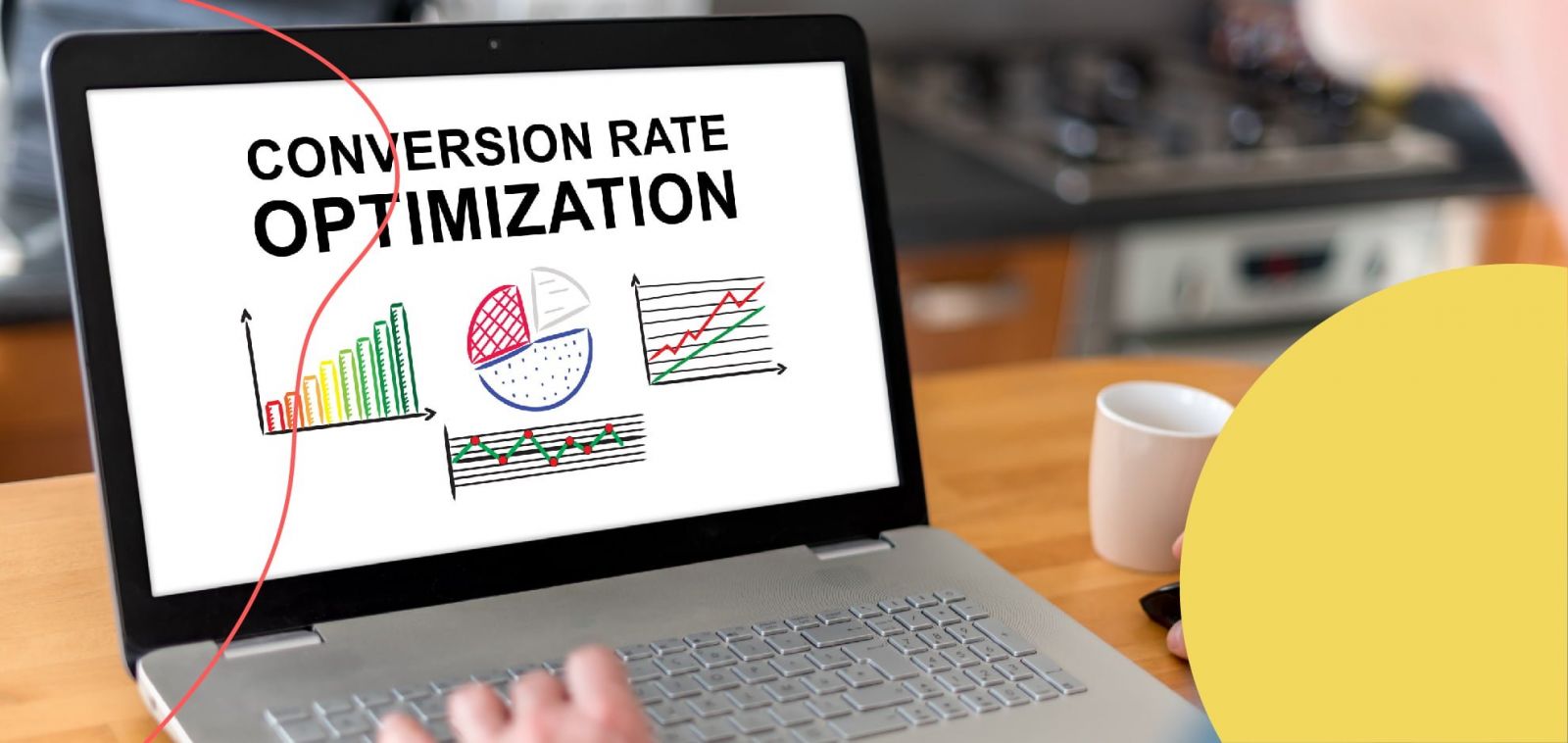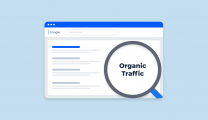What is CRO?
CRO stands for “Conversion Rate Optimization”, a strategy based on the constant improvement of website elements to attract and convert more users.
For example, within your Digital Marketing strategy, it’s more likely that your site will serve as a prospecting and sales channel, where leads can request a quote or even hire a service.
But of the total number of visitors, how many are actually becoming your customers? This number is your conversion rate.
The underlying idea of CRO is to optimize your conversion rate. In other words, it aims to make your sales process more efficient, thus generating more money.
This is mainly achieved through tests that help you understand what best encourages site visitors to take the desired action.
There is a wide range of elements to test, as well as different ways to reach this goal.
However, the objective is always the same: to convince more people to reach the end of the purchase process.
Why is CRO important?
It is essential to understand that traffic to your site, even organic, has a cost. Thus, knowing what to do with your visitors is very important to achieving your marketing and sales goals.
CRO exists to help you ensure that as much of that traffic as possible results in a sale and valuable opportunities are not lost because of errors in the conversion process.
Here are three reasons to value what CRO can offer your company.
Saves time and money
It’s easy to see the impact that CRO can have on a business regarding the time and money spent to achieve results.
After all, the higher your conversion rate, the less time it takes to reach your revenue goals.
Increased results without increased work
Consider the following scenario: you offer a SaaS product that costs $29.90 per month, with a conversion rate of 5% and a monthly average of 1,000 visits.
This means that, for every 1,000 visitors who access the product’s landing page, 50 become customers, generating a monthly revenue of $1,495.00.
After performing an A/B test, you discover that you can increase your conversion rate to 8% simply by changing the page’s background image.
What does this represent in financial terms?
For every 1,000 visitors, you now have 80 new customers. This translates to $2,392.00 in monthly revenue, an increase of $897.00.
Average ticket increase
As it’s easier to sell to someone already using one of your products — the famous cross-sell —, you will soon see other opportunities to increase profits through CRO.
Rather than simply thanking the customer for their purchase, a few tests and refinements to the checkout pages’ flow can help you provide useful recommendations to customers.
In this case, a purchase may even double in value through a few small changes in how the products are presented.
How does a CRO strategy works?
Like any marketing strategy, CRO follows a method. The more committed you are to each step of the process, the better the results.
Here are the basic steps to correctly apply CRO in a relevant way to your marketing strategy.

Collect information
Tests need to be performed based on collected data, not mere guesses or assumptions.
Spend considerable time researching and gathering information that is useful for making the right changes and preventing your tests from failing to identify what works.
There are several ways to collect this data, such as:
- monitor metrics through analysis tools;
- conduct user surveys on the page itself;
- interview current customers about the product and purchase process;
- perform usability tests.
All of these options are useful for providing quantitative and qualitative data that will make your tests more accurate and successful.
Look for opportunities in the data
After collecting enough data, you still need to know how to interpret it to find opportunities to improve your conversion process.
In other words, don’t just look at numbers, but try to understand what they say about your potential customer’s wants and needs.
Why do users behave this way? What improvements could you make on the page to best suit them?
Create tests to define the best solutions
Once you have collected data and thought about improvement opportunities, testing — so important for any optimization — becomes much easier.
A/B tests are a very straightforward method to identify what works best. The research done beforehand will increase the odds that these tests will generate useful data for your company.
Optimize your strategy and track results
As soon as you find the most effective variations in attracting customers, don’t delay putting them into practice. But once you do, continue to follow the results closely.
Wrap up the test, choose the winning setup and, where necessary, ask your web developer to implement any changes on the site.
Repeat the optimization cycle
Even if the whole process has been followed step-by-step, the market changes quickly, and the solution you have tested may only be efficient for a short time.
Just because you’ve hit upon a variation that works today, it doesn’t mean that you should keep using it forever. Monitoring must be an ongoing process to ensure that you continue to achieve good results.
With that in mind, a CRO strategy is not a one-off action or a temporary event. Rather, it is a consistent and permanent effort.
The 10 essential concepts of CRO
Contrary to what some people think, Conversion Rate Optimization is a science. Therefore, it must be tested and proven, not simply relying on guesswork.
With that in mind, we’ve selected 10 concepts that will help you create pages that increase conversions. Don’t take our word for it; try them yourself!
1. Elements that directly influence the conversion rate
When presenting an offer, it’s necessary to call your visitor’s attention so that they feel safe and end up converting.
Unsure how to proceed? Just follow these tips:
- value proposition: a person performs a cost-benefit analysis before taking any action on a page. So, ensure the value of what’s on offer is very visible;
- clarity: there’s no point in having the best product in the world if users don’t understand what you are trying to sell. So make sure your visitors can clearly understand your solution as soon as they read it;
- relevance: is the user really looking for what you are offering them? Ensure your offer is relevant to solving their problem;
- anxiety: avoid elements that cause friction and insecurity for users. They must feel safe to convert;
- urgency: with so much information in our daily routines, people’s attention ends up divided. Therefore, creating a sense of urgency for your offer is crucial for users to take action at the moment and not leave it for later;
- distraction: there is a general tendency for people to feel terrified of blank spaces, a phenomenon referred to as horror vacui. When creating a page, avoid elements with no purpose, which can distract users and impede their conversion.
2. Roberval balance
The Roberval balance is a weighing device named after its inventor Gilles Personne de Roberval, a French mathematician, and physicist.
Consider a scale, where each side corresponds to a page, and the goal is to maintain a balance.
When making big changes on one side, there will be a large discrepancy between the two sides. It will lead to a decrease in conversion on the second and, consequently, a drop in the conversion rate of the experiment.
3. Paradox of choice
The paradox of choice is a theory created by the American psychologist Barry Schwartz.
The idea is that too many choices can lead to individuals making less effective and satisfying decisions than they would have if they had fewer options from which to choose.
So when creating a page, focus on offering only one option to the user.
That prevents them from falling into the paradox of choice, unsure of which course to take, resulting in leaving the site without taking any action.
4. Loss aversion
In general, people tend to be more sensitive to losses than gains.
When presenting a customer with an offer, make it clear that, by not buying, they are risking losing money.
This has a greater effect than demonstrating that purchasing the product brings benefits.
5. Immediate effect
Due to our busy lives, people tend to prefer solutions that are immediate and quickly solve their problems.
Thus, a clear and objective message can achieve a better result than a long one that requires careful attention.

For example, simply listing the benefits of a product is likely to be more relevant than in-depth, descriptive paragraphs.
6. Anchor effect
When receiving information, people use it as a point of reference to make judgments about the following information.
So, when you present a concept or an offer to a visitor on your website, that is likely to be interpreted as a fact. This directly influences the following decisions.
For example, if a person asks you to repeat the word “white” several times, then asks you what the cow drinks, the most common response is “milk”, instead of “water”.
It demonstrates the impact of the first statement as a basis for answering the question.
7. Serial position effect
The serial position effect reveals that the first and last items in lists are more easily remembered than items in the middle.
Putting relevant information at the beginning or end of a sequence can have a better effect than at the center.
8. Mere-exposure
This theory reveals that an individual’s positive action can be induced through familiarity.
Imagine that, whenever a person sees a red car, they fondly remember their childhood because of the red car their grandparents used to drive to pick them up from school.
As a result, whenever they see another product besides a red car, they tend to have a positive opinion of that product.
This is often applied in beer commercials, which associate drinking with physically attractive individuals.
9. Conversion heuristics
The conversion heuristic is an equation developed by the MECLABS Research Institute to explain how this process works. The formula that represents it is:
C = 4m + 3v + 2(i-f) – 2a
Where:
C = conversion probability;
m = user motivation;
v = clarity of the value proposition;
i = additional incentive for action;
f = friction element;
a = anxiety element.
This equation can be used to analyze whether a page meets users’ expectations for usability, with the ultimate goal of conversions.
It’s worth remembering that, while important, heuristic evaluations should never replace tests.












Replies to This Discussion